Is it possible to recycle 100% of a small family’s organic kitchen waste with just a simple, single worm farm? I’ve always wondered.
I’ve done 50% of our scraps easily – but the whole lot? That’s… a lot of scraps, in our house.
Well, it seems you can, if the design is right. We’ve been trialling a Hungry bin worm farm for a week or two now, and we’re darn impressed with the results.
Worms! Such an allay in small space nutrient cycling setups. Actually, they’re just as awesome within larger systems too.
But today I’m talking small. Household size – a household that eats a lot.
So: nutrient cycling. How best to do it? We now have a smallish back yard – composting is logistically tricky.
But of course we want to recycle all our organic kitchen waste back through an effective nutrient cycling system and get that goodness into our veggie patch.
There’s a couple of ways you can do this. Within our context (renting, no animals technically allowed, smallish yard), the obvious go-to is WORMS.
Now at the farm we had all sorts of large-ish worm farm and vertigation setups, and we loved them for the nutrients they brought to our kitchen and our market garden.
But where we are now, we’ve got limited space. There’s all sorts of worm farm hacks and designs out there for backyard scale, including all the wonder of worm towers, but I will admit I was wondering:
Can we just have one basic worm farm capable of processing all our kitchen waste?
I’d had my eye on the Hungry Bin for a few years now – it seemed like a really interesting design in that the shape compacts the worm castings via gravity, causing the worms to stay up the top .
The worms all staying up the top should ensure they munch through your scraps faster, which means you can put more scraps in more often.
And the idea is that this compaction facet of the Hungry Bin’s design also makes harvesting the worm castings easier – you unlock the bottom tray and a ‘cake’ of castings comes away in that tray (with the castings above it staying put due to said compaction, until it all creeps slowly down).
The worm juice in this design just drips out the bottom of the tray and collects in a pan on the ground. You could swap this pan for a bucket if you like.
So we were curious. Could this one thing process ALL our kitchen waste?
After all, we’ve been hearing about cafes, and now even a correctional facility, with arrays of Hungry bins set up to chew through commercial volumes of scraps for kitchen gardens. It sounded encouraging.
Time to find out.
I also wanted to try an inside worm farm – the temperature is more stable inside, which should in theory mean happier worms which chew through everything quicker.
And a worm farm just around the corner from the kitchen means we’ll feed it every day or so, because it’s right there, rather than having the scraps bucket become gucky before we remember to empty it into the wormfarm out the back, again.
So now we’re two weeks in, and the answer is yes, this worm farm design can handle all our scraps with ease. I”m impressed.
Of course there’s a few things you’re not meant to send through a wormfarm as the worms don’t like to eat them them – citrus, onions, dairy, meat and a few others.
As with anything though, it’s all about balance and diversity – a healthy, fully cranking wormfarm can handle a little leftover porridge with yogurt here, some onionskins there, without any ill effects. The worms may not eat it all, but the other microbial life in there will.
And carbon – don’t forget your carbon. Like good compost, again, a healthy wormfarm is all about balance, and the most common cause of a worm farm gone stinky is too much nutrients, not enough carbon.
So into the Hungry Bin goes our weekly newspaper, and any un-coated paper we receive, after we’ve ripped it up.
So it seems the domestic kitchen nutrient cycling at our place is sorted. Huzzah for good design!
We’re looking forward to installing a small array of Hungry Bins at the Permaculture rooftop learning garden we’re about to start installing in Redfern this Spring, to turn nearby cafe’s scraps into nutrient rich inputs for our veggies there.
Apparently when a Hungry bin is in full flight, it can handle up to 2kg of organic scraps per day. PER DAY, people.
That’s a lot. We can’t wait to push this system and see how it goes – but I have a feeling it’s going to do just fine. Stay tuned.
Big thanks to Worm Lovers, who supplied us with a Hungry Bin to try out and who distribute Hungry bins in Australia.
As I said above, there’s all sorts of worm farm designs and plans out there, and the most important thing is that more of us engage in home-scale nutrient cycling by whatever means necessary.
But if you’re after a simple and sturdy unit that can handle large volumes and which packs right down for relocation, the Hungry Bin seems like a pretty good choice to us.



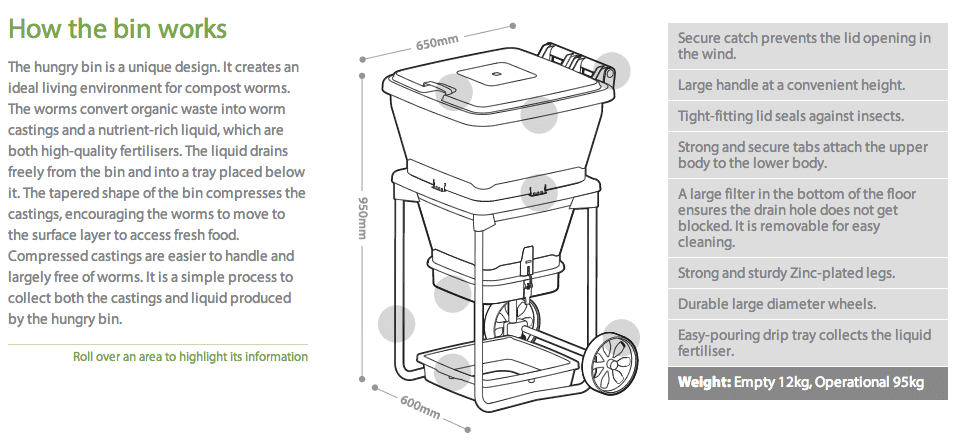



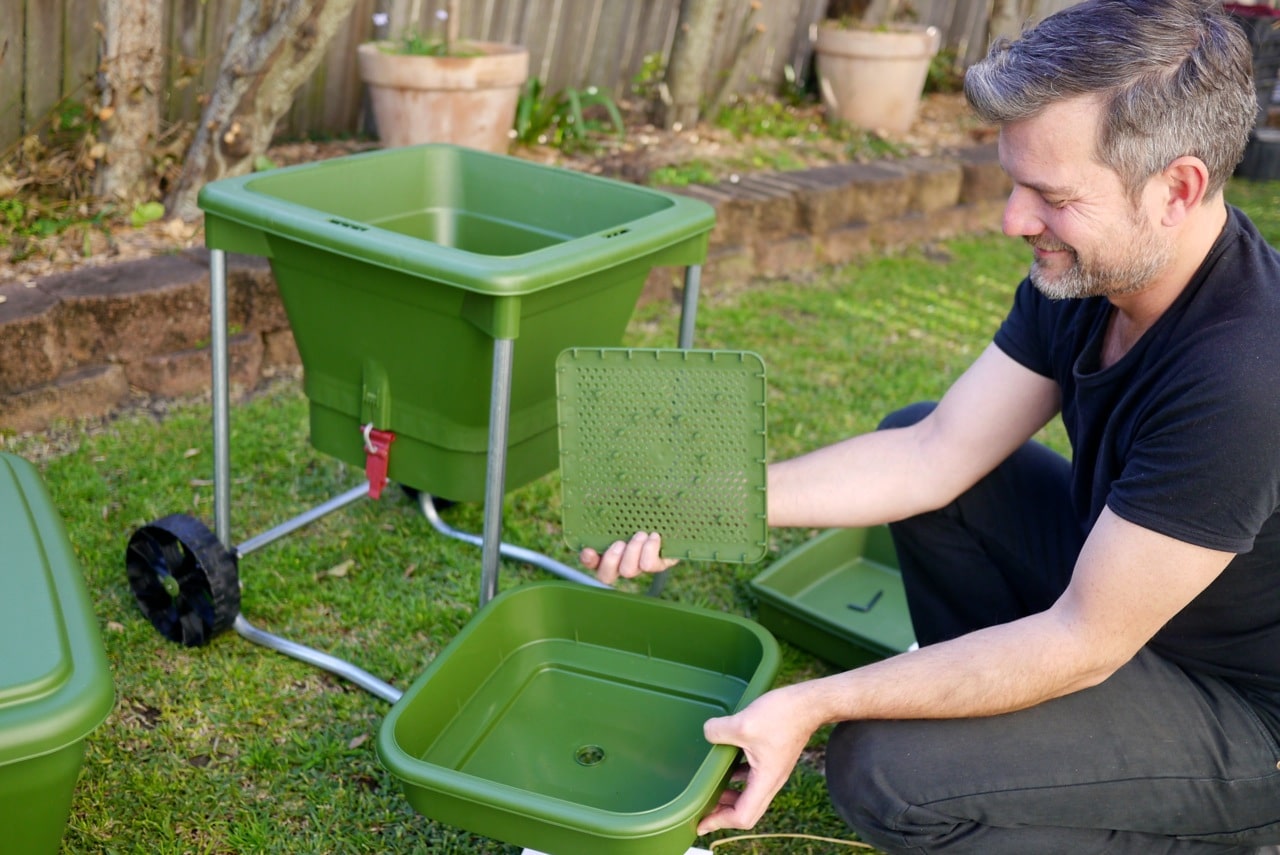




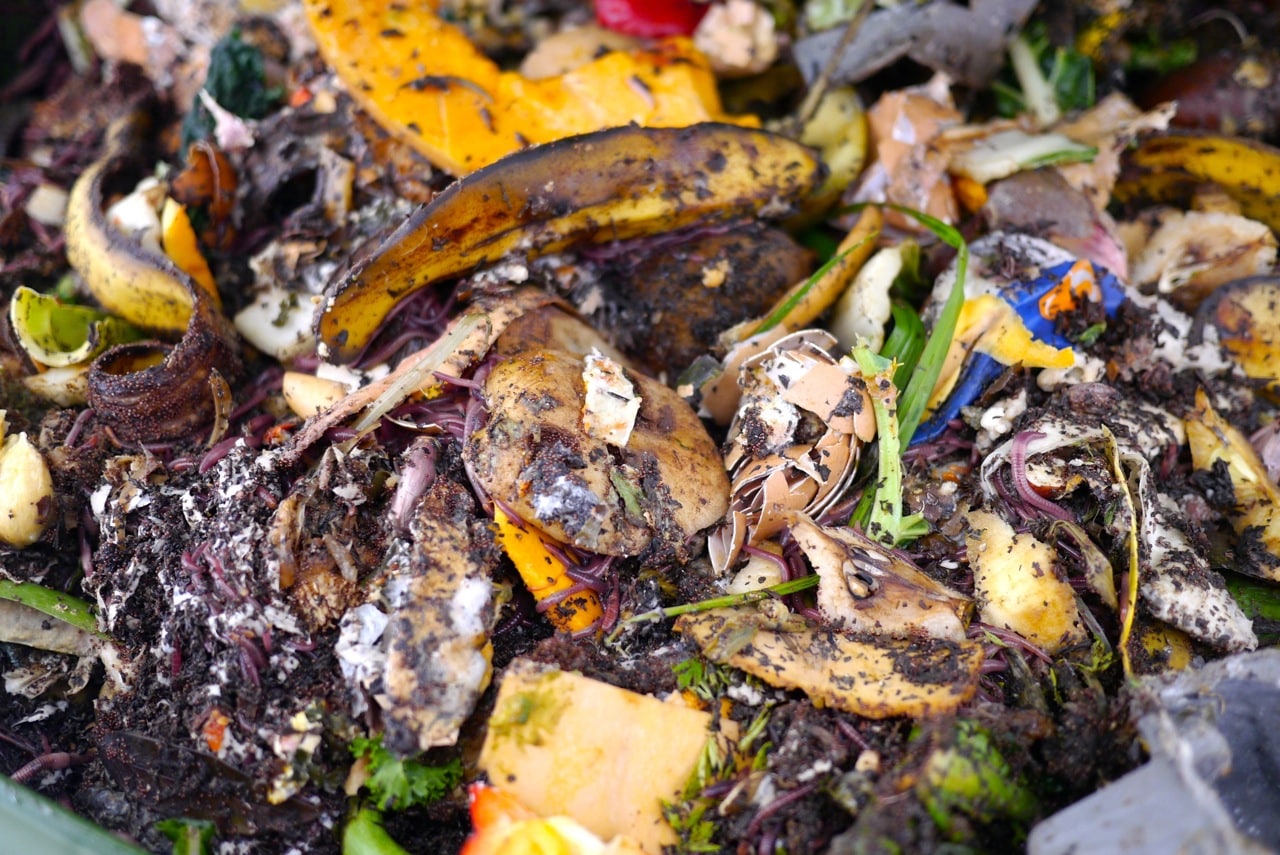
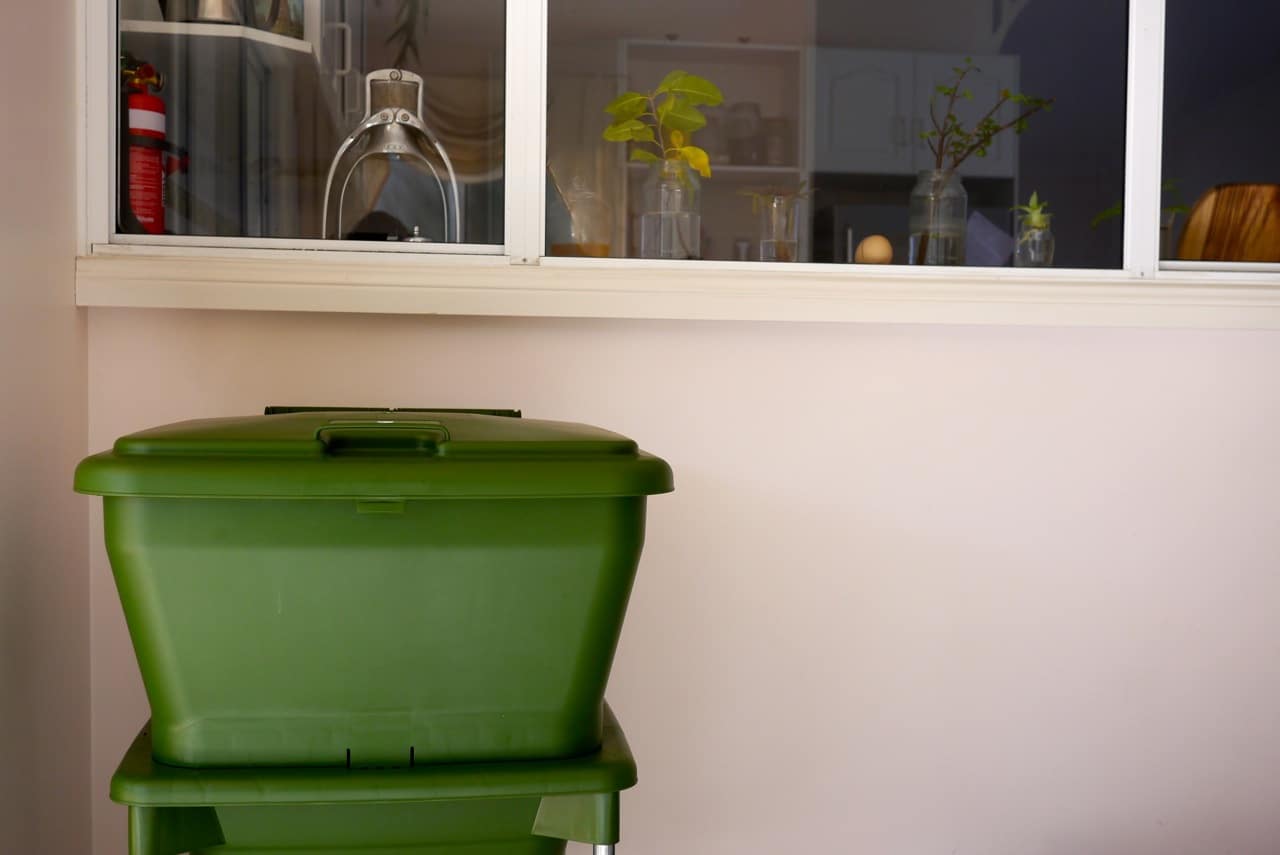
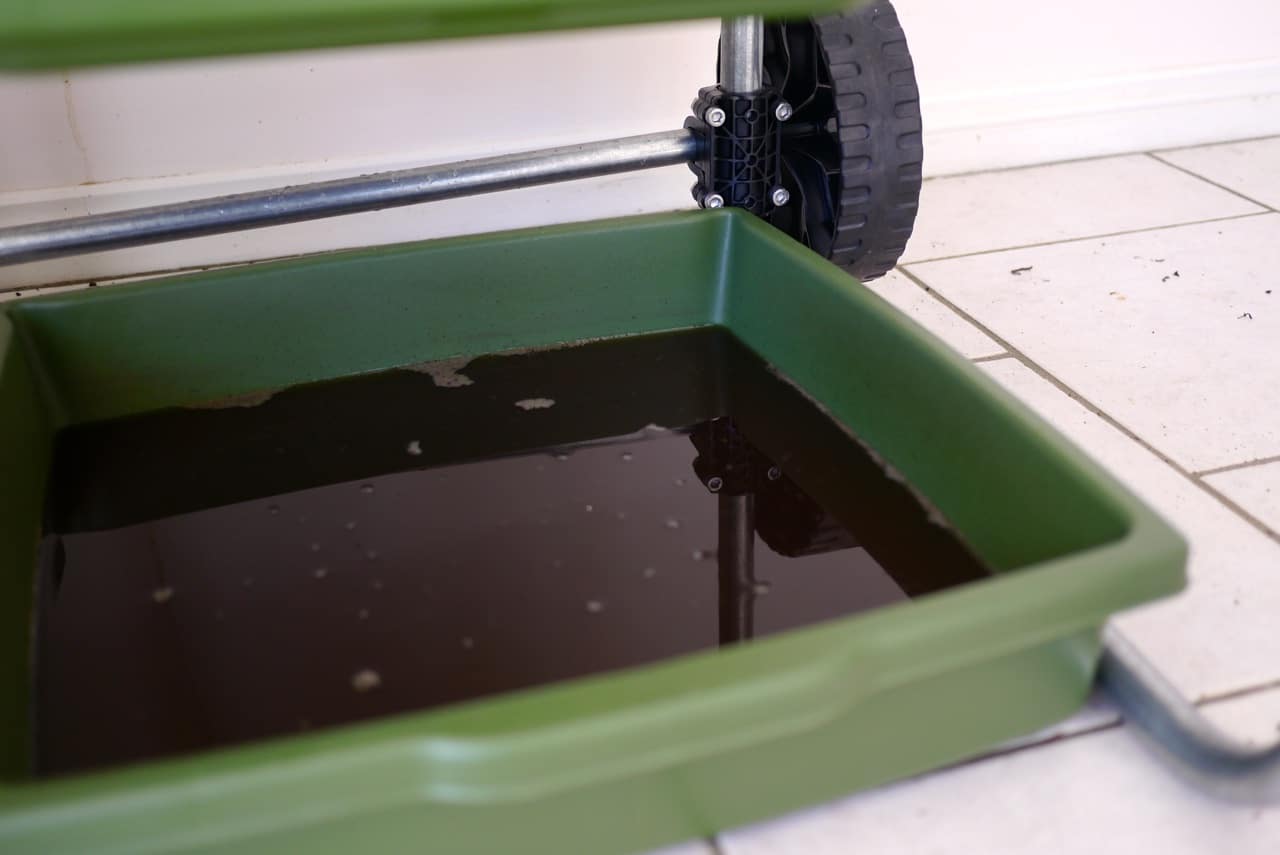














Okay…this really is a silly question, but…you have your Hungry Bin but where do you find the worms? Buy them at a bait shop? Turn over your garden and hope to find a couple to start with?
This looks like a great product! Thank you for sharing!
they come with the red compost worms, actually! Or you can buy them at any hardware store these days, if you’re in Australia.
Ahhhh! Yup…Australia is a bit far to travel for worms, I believe. Lol!! I will look a little closer to home for the little creepy crawlers! Thank you so much for replying! Happy “farming”!!
Red compost worms or tiger worms are suited for Mediterranean areas of Australia and probably similar latitudes in other parts of the earth. Other worm types are more suited to tropical areas such as Queensland while others are for cooler climate latitudes such as Tasmania. I am sure you will be able to find suitable composting worms for your latitude from your local hardware shop or organic gardening centre
Reblogged this on McKinley Post and commented:
Saving the planet one peel at a time.
Did you find you have to chop up your scraps rather small when you’re first starting out?
I chop up any food scraps or peelings down to about 5cm – especially things like rotten apples, rotten oranges, tough cabbage stems, old carrots, etc. Citrous peels are fine, again chopped up a bit and spread throughout the compost. The hard outer skin of pumpkins definitely needs chopping up small, otherwise they will hang around for ages. Onion peels are fine. So are egg shells. Everything well mixed together, never a whole pile of one thing or the other all at once. Years ago, while living at CERES and looking after the compost there, I found half a grapefruit… Read more »
Are Hungry Bins available in the U.S.? Also, I’m concerned about leaving ANY open liquid outside due to mosquitos. Any thoughts on that, if one must leave this outside?
Hi Latebloomershow, hungry bins will soon be available in the US via our reseller in Canada, Greentools Imports.
In NZ we haven’t had any problems with mosquitos in the liquid, it’s generally got too many nutrients in it for them to survive. I’ve certainly not seen them breeding in the liquid. If you were worried, you could collect the liquid every other day, so the larvae never get a chance to mature!
i would think the pH of the worm juice would ensure it was mosquito larvae free.. hmm…
I know the mozzies LOVE the worm juice that comes out of my worm farm. I can’t leave it lying around or they get out of hand! In the bin, a bottle or the garden.
Any thoughts for hot summers in the southern states? After a few days of 40+, poor little wormies die in large numbers. It’s devastating. We thought we’d cracked it with brocolli boxes in the shade but all it did was slow things down a bit. (I suspect worm towers are the answer but their scale and ease of harvesting leaves a little to be desired ).
In our nutso summer heat at the farm, the bathtub wormfarms were ok just because of their size – there was enough volume and therefore enough thermal mass to regulate the temperature so the worms were ok. that’s one of the things I like about this design, the volume means better temperature stabilisation… good luck!
I think any old plastic bin with lid can work really well.
Cut the bottom cut off, to sit on dirt ground.
Small ventilation to stop vermin.
About 200 litre is a good size.
Add a few compost worm and they will build up to process all kitchen scaps.
Just add some dry material with kitchen scraps so it it not too moist.
Often a solid plastic bin can be found for virtually nothing.
That’s fine if you want a big worm tower, but might be a bit tricky to harvest the castings + the worm juice easily? But whatever works for you, we say!
I just use the compost after the bin is full, or small amounts from the bottom.
Its good to have two bins – one finished and it compost being used, and the second bin being filled.
I wouldn’t call the finished product as worm castings,
but I think it must be just as good,
because thousands of worms form a thick mat in the bin being filled.
The Hungry Bin looks like a well-designed, composting system. In the time the tray is removed to unload the castings and the device is bumped, can the entire column of compost ‘collapse’ and drop out? Another ‘stacking function’ in waste recycling is adding a grub composter as a preliminary step in the vermi-composting system. The BSF grubs will digest nitrogen rich waste sources yielding a near perfect C/N ratio material for the second stage of worm composting. One of the nicest models available at this time for a home system is the BioPod Plus. http://www.thebiopod.com/pages/biopod-plus.html The larger BioPods are being… Read more »
re it all collapsing and falling out – the theory is that the shape compacts the castings so when you unlock the tray, just a cake of casting comes away and the rest stays put due to the shape of it all. Will report back on that.
yeah we’ve been meaning to do the biopod thing for years – this might be our year for it!
I love this idea!
At home I have room to compost and don’t need to use a worm-bin, but I love the concept. 2kg a day is incredible!
I look forward to hearing how the worms progress 🙂
Love the look of this for diverting more of our organic waste from landfill (currently have 2 worm towers in veggie patch but they can’t take all our scraps). The big question for me is – how do I use the output? I live in Melbourne and my garden is entirely Australian native (apart from veggie patch) – I have a feeling worm castings and worm juice (even diluted) contain too much phosphorous (or are considered too potent) to use on native gardens very often. Does anyone out there successfully use their castings on native plants? Would love to hear… Read more »
I threw some lamb bones in my bathtub worm farm and there are that many worms climbing in and out of the bones I figured they loved them. I recently threw in the soft bones leftover from making chicken stock as well as coffee grinds, horse manure, pond weed and leaves. Time for more carbon though for sure. I also recently chucked in a pumpkin that went rotten and I’m hoping the seeds will grow and then the pumpkin can shade the worms and the worms will feed the pumpkins. 🙂 I love the idea of the hungry bins though… Read more »
What do you do with the scraps that you can’t put in the worm farm?
well, we’re putting all the scraps in the wormfarm. even those that are technically unsuitable. as said, other stuff in there is dealing with it just fine.
My concern is ventilation. There appears to be no air vents. Worms will do ok in almost anything for two weeks. Long term is a different thing. Worms also don’t eat fresh. The food has to be breaking down before they eat it. Newspaper may be fine but it has no nutritional value for the worms. I get emails every summer from people with dead worm farms. First question I ask is if it is a multi layer farm? In every case the answer is yes. They are just a gimmick and little ovens out in the sun. Overall I… Read more »
The lid is pierced all over with small holes for ventilation
Sorry I couldn’t see them from the pictures. I breed worms on a hobby basis and as I said I think this idea will go very well. Multi layered farms trap worms between the layers if gaps are allowed to form between them. This idea eliminates that problem.
What is the cost?
The comment below about worms eating everything that once lived is correct. Worming products in horse manure won’t kill worms either. I have proved this. Urine in sawdust in the manure will kill worms.
My home built worm farms all handle onion, citrus, dairy, fish and chook cleanings and small dead animals (think trapped rats & mice or dead pet fish or birds) without any problems. The bigger bits I will dig a hole and bury it down in one corner and the worms will move in when they are ready or take it slowly.
This is a good summary of effective domestic worm farming if a little biased by the promotion of this one type by the writer who has been provided it by the manufacturer. As a worm farmer of many years experience I can state that the rate of feeding by worms is categorically related to the number of worms in the farm and the surface area of the worm farm as well, of course, as the correct management of it. This bin appears to be based on a 360L wheelie bin so the surface area is likely to be less than… Read more »
dude its a review a product, not a summary of worm farming. We’ll get back to you on the data, though we rarely generate 2kg of waste a day so might have to wait for the city community garden versions.
The company seem pretty thorough, dedicated and ethical to us so I don’t see why they would fudge their figures on what their wormfarms can handle, there wouldn’t be much point in that.
fair enough, Kirsten, though over the years I have seen many claims made for products, especially re: worm farms that often do not stack up. I’m not saying it is due to deceipt but more often over enthusiasm and lack of long term testing.
yes I hear you on that, it’s true!
Hi Peter, I’ll stand by the claims. The largest population of worms we’ve measured from a single hungry bin is just over 4kg… They will process around 2.5 kg per day at full capacity, but the reality is that most people achieve 1. 2 – 1.6 kg on a regular basis due to the makeup of the food waste. 2kg of bread is quite different to 2kg of peelings. We’ve actually found that it’s best not to pulp the food, as it prevents good oxygen transfer. Lastly this link is for your enjoymnent…
http://www.hungrybin.co.nz/customers/large-scale-processing/
Cheers, Ben.
Hi Ben,
I am surprised by that quantity of worms in such a bin and I concur that 1.2-1.6kg processing is likely to be the upper limit for most people while the 2.5kg amount would be tough to achieve on a consistent basis. Pulping can lead to oxygen deprivation as you note though the technique of aerating the bed consistently can offset this problem to a fair degree, as can mixing the pulp with other more bulky food items.
I have had a hungry bin for 3 years. There’s no way the worms could eat even 500gms of ‘food’ per day. They are very slow feeders however my home made composts seem to have more robust worms and therefore they’re more hungry I guess.
The living environment becomes compacted quickly and so requires regular aeration and the castings in the base takes quite a while to fill, approx 4-5 months. Overall I’m very disappointed with the purchase of the product and feel that for the high price of $300 plus better results would have been obtained.
Sue that’s so interesting to hear! Quite different from our experience with these, in Sydney + South Coast NSW…. can I ask – what climate are you in? And was the wormfarm in a cold place? I’m wondering what the big difference was…
Now that you are by the sea and in dairy country, you might want to crank the fertiliser output up with some beach cast kelp and some cow manure (that haven’t recently been wormed)? It might stretch capacity of just one worm farm – although I suppose the manure can rest in a closed bucket and the kelp can sit in another as kelp tea and go in from there as gradual additions, while at the same time giving the worms the love they might need to get to that 2kg/day maximum.
aha the seaweed tea brew is a separate bucket at the moment here! But good thinking, will add that
Thanks, very interesting. How many worms did you start with for this trial?
hmm good question… one small black wormfarm full of worms plus the box of worms we got from hungrybin… so maybe 40-60k?
i live in a warehouse in inner sydney. technically i have no outdoor areas, but may place neat interventions into the street gardens out front. i am thinking about the worm farm inside. in the warehouse it’s keeps cool in summer and coldish in winter. based on your inside experience with the hungry worm farm do you think this could work?
yep i think it would – the worms wont be overly active if they’re in a cold spot, but if they’re inside, that might be best. It worked fine for us, though we eventually moved it outside due to competition for inside space 🙂
Hello Kristen, i bought a hungry bin last September 2014 and harvested it twice. the first harvest after 5 months when well however it look a lot like potting soil, the bin was started with 80L of potting soil as per the instructions, no big deal the stuff was moist and stayed moist for quite a while and i use it all to successfully start numerous veg and flower seeds. The second harvest was after 2 months and almost half the bin came out, i ended up with a big void in the bin, and the worms migrated in large… Read more »
we’ve done multiple harvests now, and each time it’s come out in a chunk – maybe 10L in volume. how often we harvest depends on how full it gets how fast… but it takes a fair while for the worms to process everything completely, and we do rest it now and then. how much are you feeding it?
Loving this design and in context of attending the Redfern Rooftop garden, worm farm workshop yesterday.
I am keen to replace my existing compost bin and stackable worm farm for the Hungry bin. Especially attractive when I have space issue in Newtown.
Great workshop by the way.. Thanks again.
Thanks for coming along Fiona 🙂
Great article.Thanks for sharing good way of composting waste material.
So two years on, how is the Hungry Bin Wormfarm going? Is it as good long term as it seemed when you first got it?
yes, we’ve been loving it. It’s empty right now as it’s about to move interstate, but it’s been most excellent and chowed through all our family’s scraps.
Thanks Kirsten. Good luck with the move!
I have a wheely bin which has been converted to a worm farm. I’ve had it operating for over 20 years with no issues. It handles 3 households of waste easily in the summer but slows down in the winter. (Tassie) This is the best worm farm I have ever had and I have tried most. It has a metal perforated panel on one side at the top so that air can flow and another sliding panel made of the same perforated metal on the opposite side down at the bottom of the bin to get at the worm castings.… Read more »
Fantastic Rosalyn! Love a good wheeliebin worm system 🙂
Does anybody know whether it’s possible to buy spare parts for a hungry bin? Mine has a broken latch. Thanks!
Oliver, I’d contact Hungry Bin directly?